
World War I era firearms have enjoyed a kind of collectors’ renaissance in recent years. This rising popularity has been partially fueled by movies and video games that encompasses many of the iconic firearms of the period. Classics, like the Mauser C96 and Springfield M1903, continue to be extremely popular among collectors and appear frequently in popular media. With the sheer number of firearms used in and around the time of World War I, it can be easy for new collectors to overlook some truly excellent guns that don’t get the same attention as their more well-known counterparts. Sometimes, the lesser-known firearms have the most to offer us as collectors and shooters. No gun illustrates this point more clearly than the Steyr M1912 pistol.
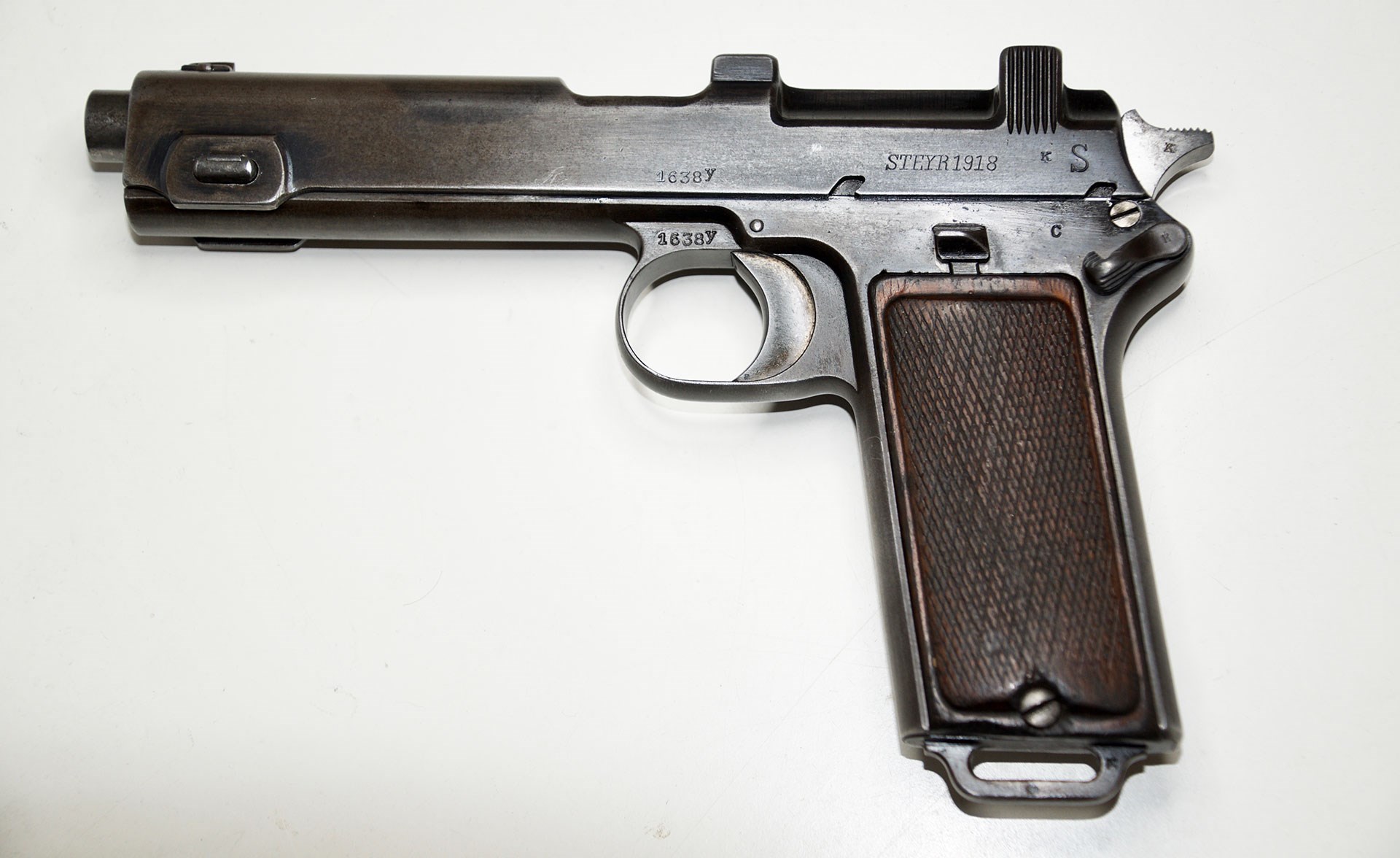
The Steyr Model of 1912 is a semi-automatic, short-recoil operated handgun chambered in 9×23 mm Steyr. Also frequently referred to as the “Steyr Hahn” (Hahn being a German word for hammer), the M1912 was first produced in 1911 by the legendary Austrian arms manufacturer ŒWG Steyr. Though it would not be immediately adopted by Austro-Hungarian troops, the gun proved popular in the export market. Both Chile and Romania would order variants of the M1912 pistol from Steyr. With the outbreak of World War I, exports to Entente-aligned Romania were no longer an option. The Austro-Hungarian government would order large quantities of Steyr M1912 pistols to supplement their supply of Roth Krnka M7 pistols. The consensus is that the M1912 had a good reputation, and was a very solid military service pistol for the time.
From a collectability standpoint, there is much to be said for the M1912. Like most other pistols of the era, the value of the Steyr Hahn is climbing steadily. That being said, it hasn’t suffered the same level of inflation that certain other surplus and historical firearms have. This means that collectors may still find a decent price on an M1912, if they know where to look and have patience. While it’s certainly not the least expensive World War I surplus firearm, the M1912 gives you a lot of bang for your buck. Most handguns similar in size and cartridge potency from this era are far more expensive to collect.
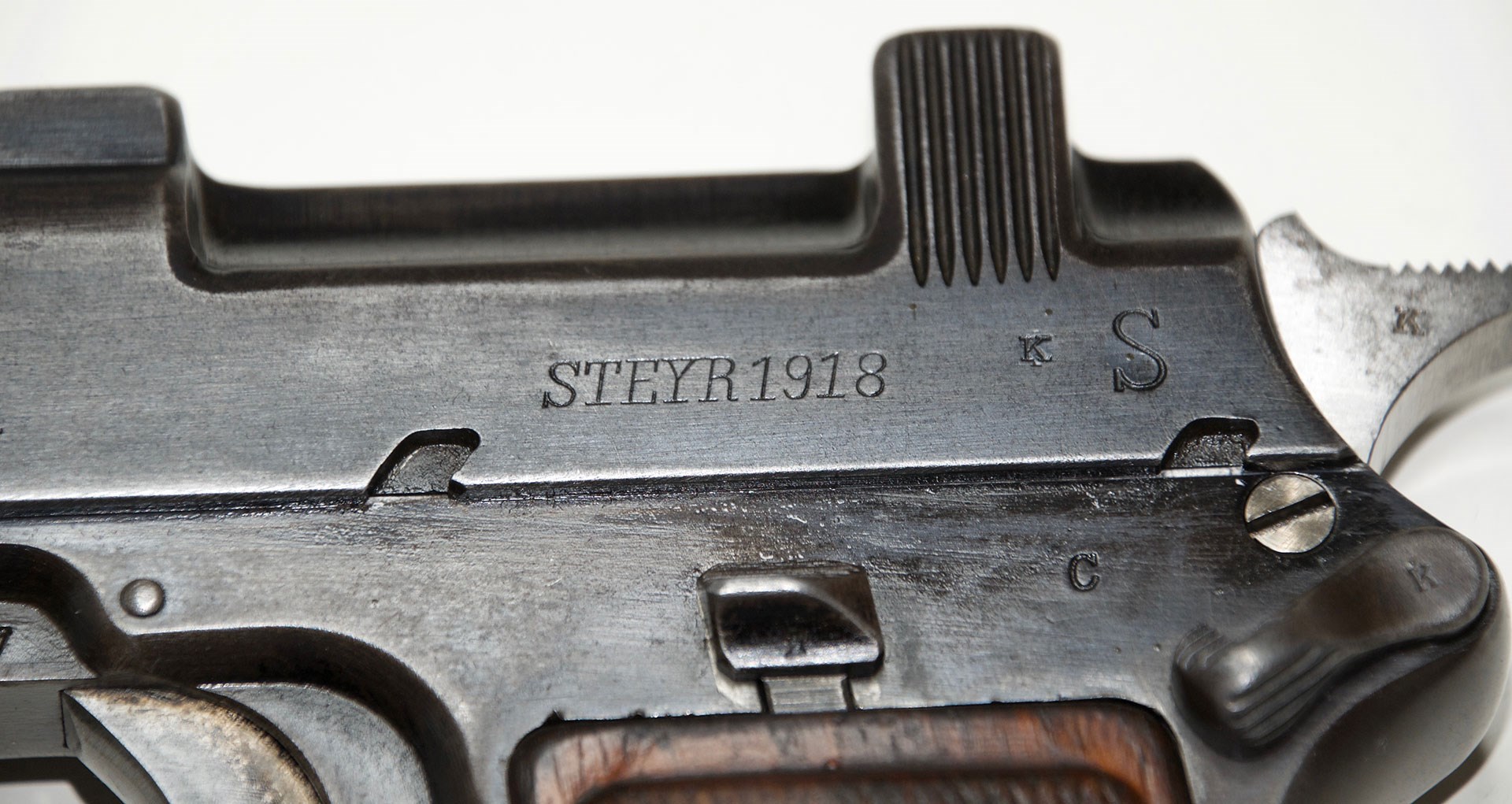
Another factor that makes the M1912 great to collect is its reliable nature and sturdy construction. I have owned and handled quite a few antique and military surplus firearms, and one thing I have come to realize is that many of these old guns are prone to parts breakages and odd malfunctions. Most of the time this is simply due to the age of the firearm, but sometimes design choices can create issues as well. For example, I have a Mauser C96, a pistol that is notoriously complicated compared to some of its peers. It has had quite a bit of work put into it, yet it still doesn’t work well. In my experience with M1912s, if you’re not missing parts, the odds are the gun will function and function well. Taking care of the pistol is not difficult, as field-stripping down to major components is simple. Many of these pistols can also be found in good condition because they were popular among officers and personnel serving off of the frontlines.
Where the Steyr Hahn really shines is at the range. For the collector who enjoys shooting their arms, getting their hands on an M1912 should be on the list of priorities. Ergonomically, it shares similarities with some of the other cutting-edge guns of the day. That is to say, the M1912 shares the more modern grip style of early 1900s Colt automatic pistols and is significantly more comfortable to hang onto than a Roth Krnka M7 or Mauser C96. The full-size grip houses an internal eight-round magazine that loads via stripper clips.
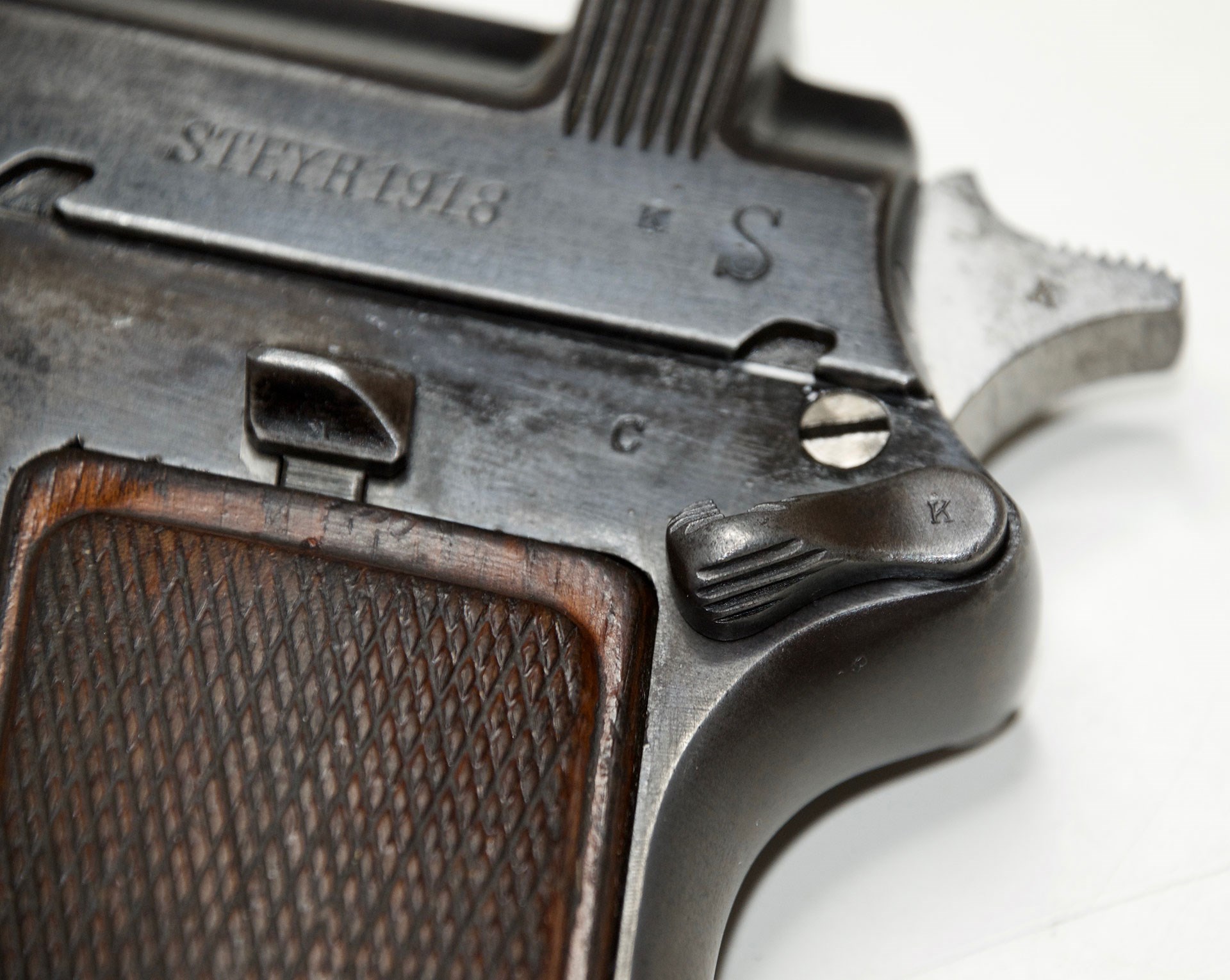
The beavertail is substantial enough that slide bite is not an issue. Controls on the M1912 are positioned in pretty natural areas for right-handed shooters. As a left-handed shooter, I’ve found that they aren’t that difficult to operate with some practice. There is also plenty of room to manipulate the slide when compared to a lot of the other service pistols of the era, without awkward two-finger pinching maneuvers to pull the slide rearward. The safety features a hook that latches into a notch in the slide, and also acts as a slide lock. A release lever is positioned further forward on the frame, allowing the remaining cartridges in the magazine to be dumped without having to cycle the slide or fire the pistol. It should be noted that pushing down on this lever will send every cartridge in the magazine flying out of the top of the pistol at once, like a geyser!
Firing the M1912 is an absolute pleasure. The 9×23 mm Steyr chambering provides decent power with a very mild recoil impulse. The 9×23 mm cartridge may lack the energy of more modern pistol rounds, but it has no problem whatsoever knocking down heavy steel targets on the range. Factory loaded 9×23 mm Steyr generally makes use of a 115-grain bullet, regardless of which manufacturer you buy from. This means that the recoil impulse of the M1912 will be relatively similar across various brands of ammo. 9×23 mm ammunition can be found on the surplus market and has been produced by brands like Fiocchi and Hornady, though availability has decreased over the last few years.
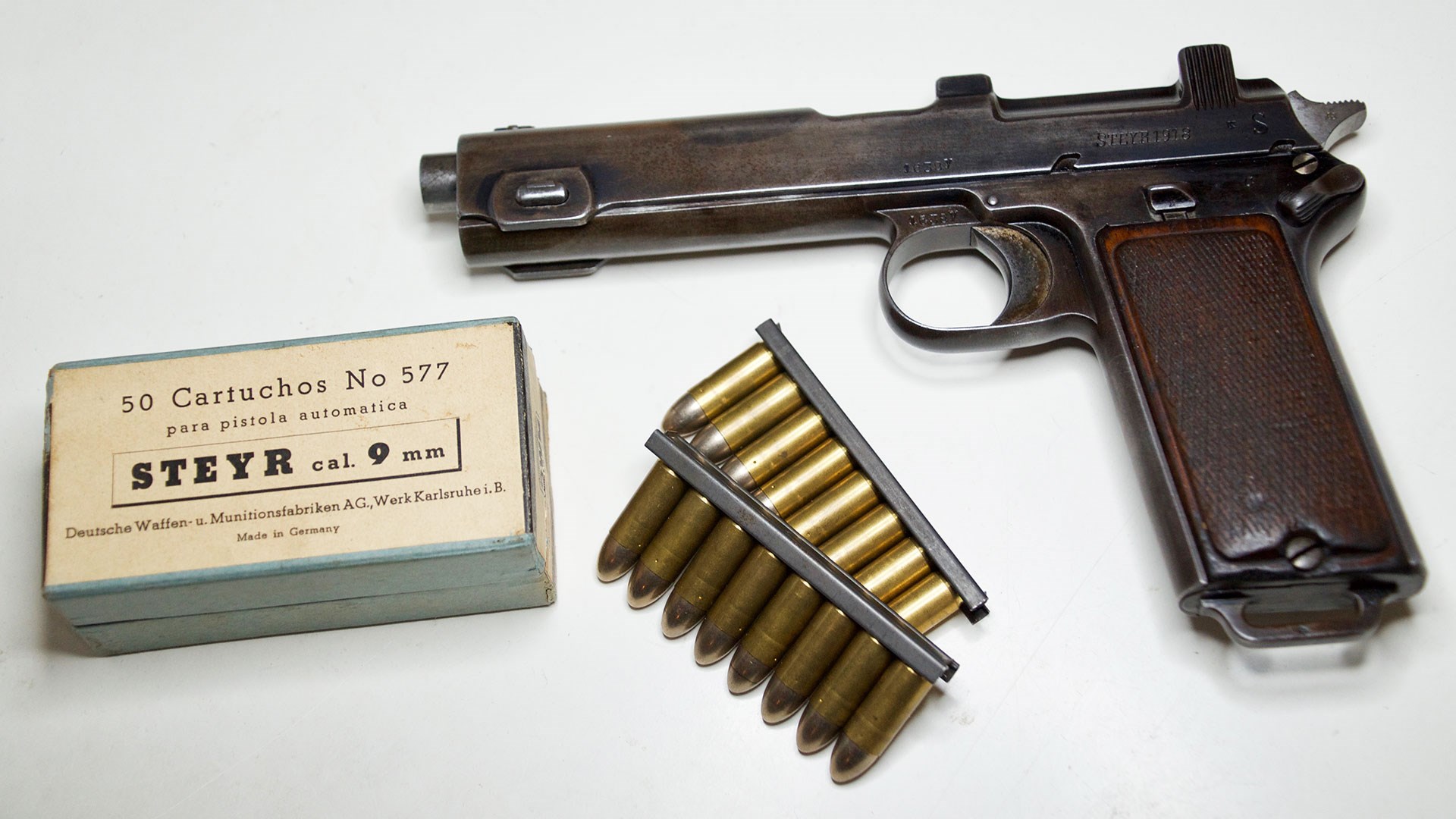
At this point, most of the 9×23 mm to be found on the internet costs in excess of a dollar per shot. Looking around at my local gun stores, I was able to buy several boxes of factory loads for around 60 cents per round. Surplus 9×23 mm Steyr tends to be less expensive, but in many cases is corrosive and will eat away at your bore if you don’t clean it promptly. As a side note, if the proprietary ammo steers you away from the M1912, there is a variant of the pistol that was re-chambered for 9 mm Luger during World War II. While this would certainly be more practical, there is something more enthralling about firing the gun in its original format.
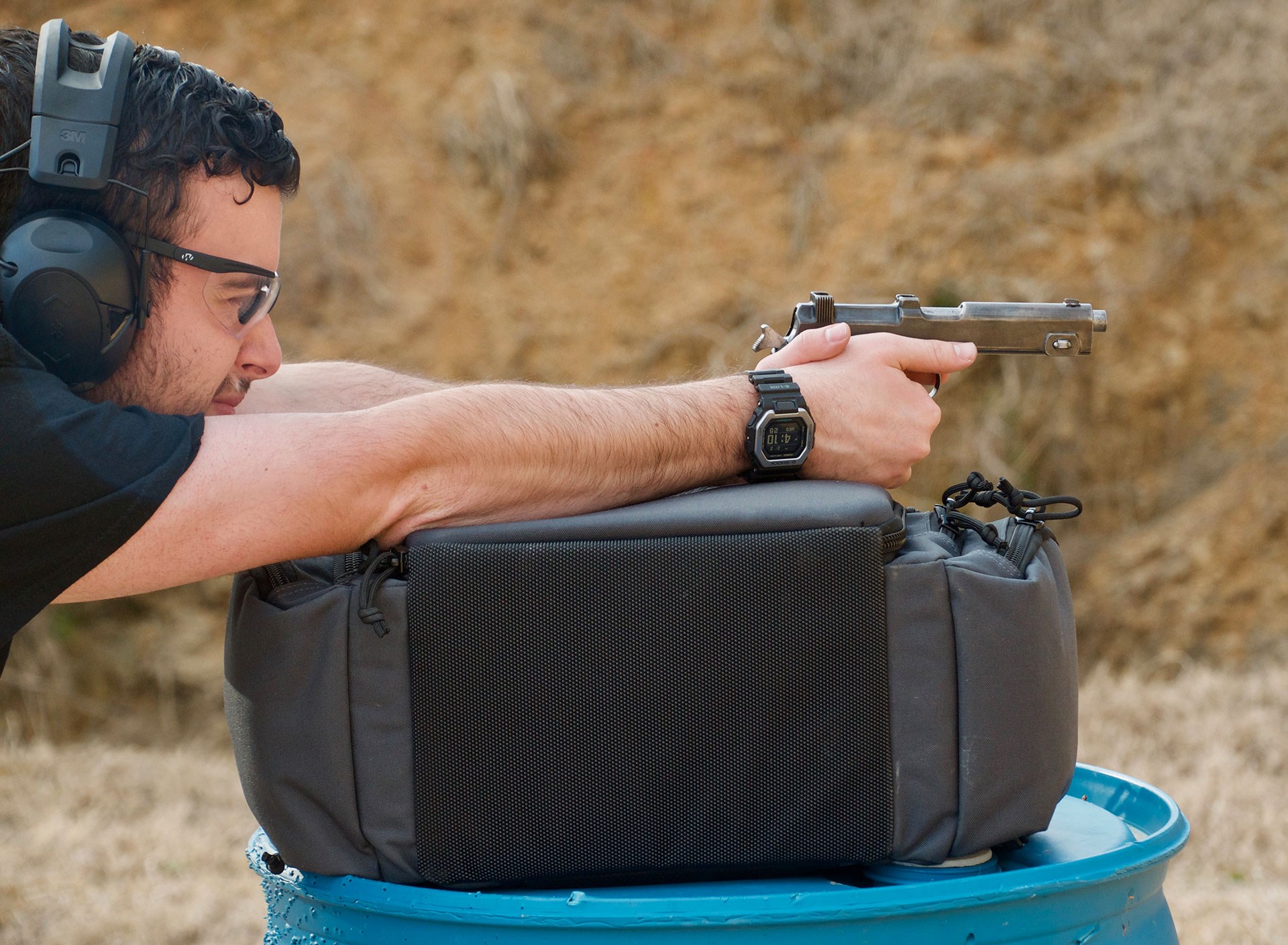
The pistol itself feels very smooth to operate. The lugs on the rotating barrel glide easily in their notches, with the use of a bit of gun grease. The trigger pull is crisp, despite having a bit of travel. Yet the reset is nice and tactile. The sights are pretty basic, but substantial enough that they don’t hinder accuracy noticeably. The M1912 is among the most accurate military surplus pistols I have ever had the opportunity to fire. When firing with one and two hands, I was able to produce groups similar to those of modern defensive handguns. I’m not sure if this has more to do with the overall easy-to-use design of the M1912 or the quality of the barrel itself.
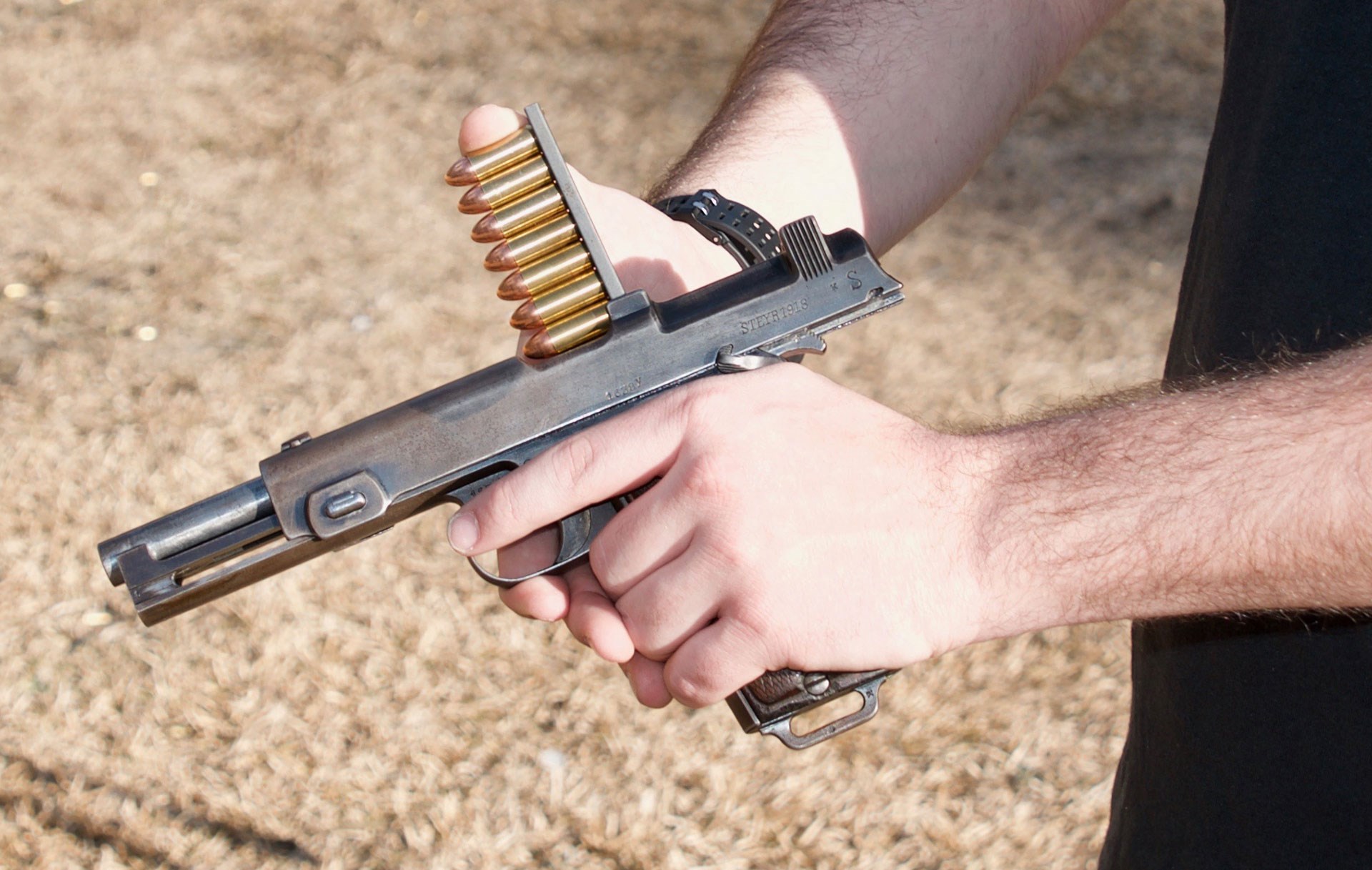
The Steyr Hahn handles rapid fire like a champ, though the trigger will take some getting used to in order to run it with speed. The 9×23 mm Steyr is flat shooting enough that follow up shots can be strung together without a great deal of effort. I would love to run the M1912 through a match one day, as it feels suited to that style of shooting. Although a detachable magazine will almost always be faster to reload, the stripper clips for the M1912 are surprisingly quick to use due to the very pronounced clip guide notch on the slide. The handling characteristics of the M1912 are a big part of what makes it such an excellent choice for collectors that shoot. When doing more dynamic shooting with the M1912, it doesn’t feel sluggish or unresponsive. This pistol is extremely capable despite its age.
The Steyr M1912 is truly a blast to own and shoot. There is so much interesting history tied to this pistol, and it’s a shame it is not more popular. It can still be found at a price point that is within reach for many new collectors. There is a lot of value in the Steyr Hahn. Not only do you get a piece of history that served in World War I and World War II, but you get a pistol that is fun to shoot. Whether you’re an avid collector or have never owned a vintage military surplus firearm, I highly recommend you look into the stellar Steyr M1912.